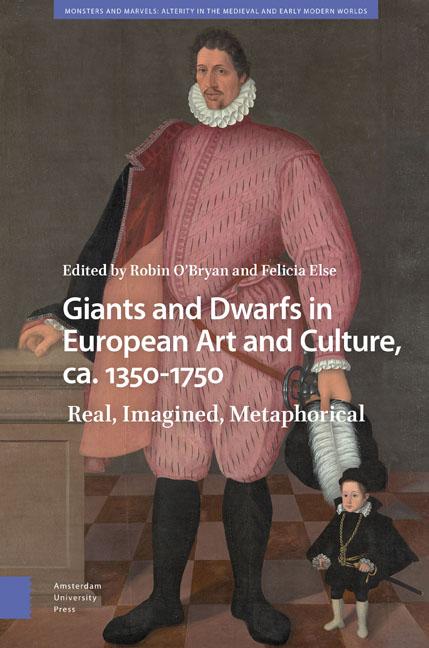10 - Dwarfs and Giants in Early Modern Caricature
Published online by Cambridge University Press: 13 April 2024
Summary
Abstract
Seventeenth-century sources defined the new genre of caricatura as a playful portrait that exaggerated a person's flaws. Physical shortcomings, such as large noses and weak chins were distorted to poke fun at the sitter. In the life of Baccio del Bianco, the biographer connected the production of caricature to drawings of caramogi (hunchbacked dwarfs), which appeared as frequent subjects in Florentine comic drawings. Early modern caricatures featured dwarf figures, which were not actual portraits but fantastic images that manipulated features for comic effect. Comparable to modern cartoonists, early caricaturists played with scale to allude to the dwarf-giant topoi to produce a funnier image. This chapter examines how early caricaturists used non-normative bodies as a visual strategy to create satirical imagery.
Keywords: Carracci School, monstrosity, caramogi, cartoon, scale, comic imagery
During the early modern period, caricature emerged as a genre that made possible the exploration of the comic and the grotesque in draftsmanship. Many caricatures featured dwarfs, and the occasional giant, which served as visual topoi of extreme contrasts to heighten the comic effect of an image. Caricatures were first referred to as ritratti ridicoli (ridiculous portraits) in a manuscript by Giulio Mancini (1559–1630), an art critic and physician in seventeenth-century Rome. Mancini described caricature as a drawing that exaggerated a subject's “natural defects,” flaws that were already present and selectively fine-tuned for comic effect. The biographer Filippo Baldinucci (1624–1696), one of the earliest writers to document the practice of caricature, defined the new genre of caricatura in his Vocabolario toscano dell’arte del disegno (Tuscan Vocabulary of the Art of Drawing, 1681) as a playful portrait that disproportionately increased imperfections. Physical flaws, whether a large nose or a weak chin, were distorted to poke fun at the sitter. The features of non-normative bodies, including hunchbacks, the lame (zoppi), and dwarfs, were appropriated as comic strategy to produce ridiculous portraits. Height, in deficiency or excess, was an easy feature for artists to manipulate to create humorous interpretations of their subjects, a pictorial maneuver that plays into the contemporary societal obsessions with giants and dwarfs.
- Type
- Chapter
- Information
- Giants and Dwarfs in European Art and Culture, c. 1350-1750Real, Imagined, Metaphorical, pp. 323 - 342Publisher: Amsterdam University PressPrint publication year: 2024



